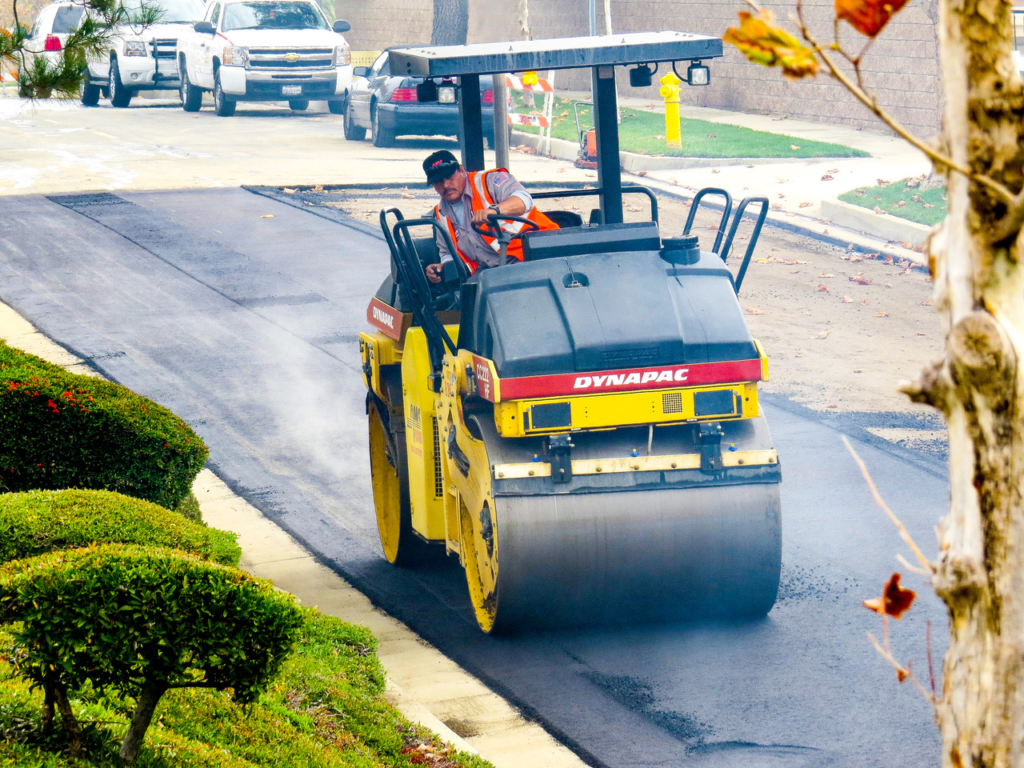
What is it?
A roller is a heavy piece of construction equipment used to compact soil, base rock, and for asphalt installation and is essential to the construction of roads, parking lots, and subgrades. There are several types of rollers, the main 4 being pneumatic, vibratory, oscillatory, and static. Most rollers contain both front and rear drums to provide compaction, although some (pneumatic rollers) use staggered rubber tires in lieu of drums, and some (like the tamping a.k.a. “sheepsfoot” roller) have a drum with large protrusions (called “feet”) for compacting fine-grained soil like clay and loam (a mixture of clay, sand, and silt) and for concrete stabilization. Different rollers have different functions. Our larger rollers weigh from 8 to 12 tons and are used for subgrade and base installation.
How does it work?
Tamping or “sheepsfoot” rollers are great for grading native surfaces as the feet produce more of a tilling effect on softer soil. They use the weight and feet to provide greater compaction and are ideal for preparing the subgrade before asphalt paving.
Pneumatic rollers generally have 4 rubber tires on one end and 3 on the other. They are set in a staggered pattern to provide both vertical and lateral compaction. Having the ability to apply more pressure than the other types of rollers, these are great for soils that need maximum compaction, subgrade, rock base, and some asphalt.
Vibratory rollers work by having the front drum roller filled with steel and as the drum turns, the steel collides with the drum walls to produce vibration. A combination of the vibration and weight is what compacts the asphalt.
Oscillatory rollers operate by creating an oscillating motion with dual weights in the drum. The weights move in sync and create a massaging motion that produces solid compaction and is excellent for work in tight spaces.
Static rollers consist of two smooth drums (one on the front and one in the rear) that use sheer weight to provide compaction.
How do we use them?
While paving machines have a vibratory screed that provides about 80% compaction on its own, we utilize various rollers to create a much tighter compaction to make the asphalt smoother, stronger, and more solid so it lasts longer and is safer to drive on. We use a combination of vibratory and static rollers, using the bigger ones for large compaction work, and the smaller ones for the final touches and smoothing out any seams. A skilled roller operator knows exactly how much pressure to apply, how slow to drive, and when to turn the vibration on and off for the best compaction.
The roller follows behind the paving machines to compact the asphalt while it is still hot and pliable. The operators are careful to apply the right amount of pressure so the asphalt is compacted correctly, and they turn the vibration on and off to achieve more or less compaction and to not jostle any nearby concrete work (curbs, trenches, manhole surrounds, concrete slabs, etc.) as concrete is easy to crack.
